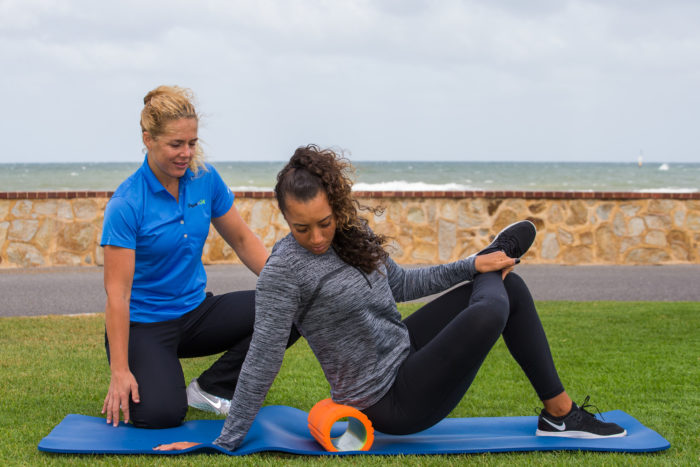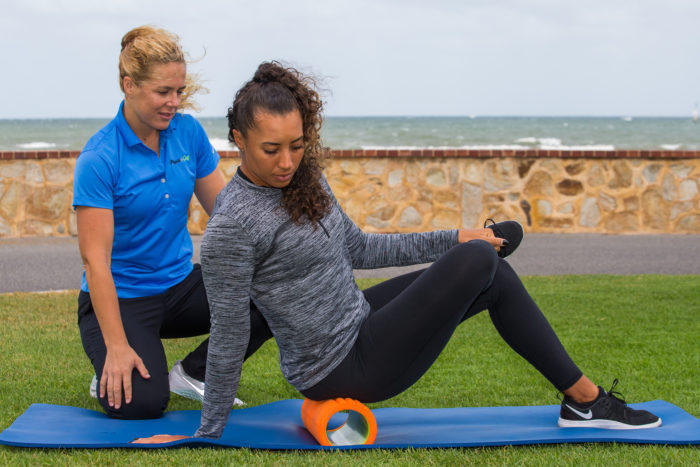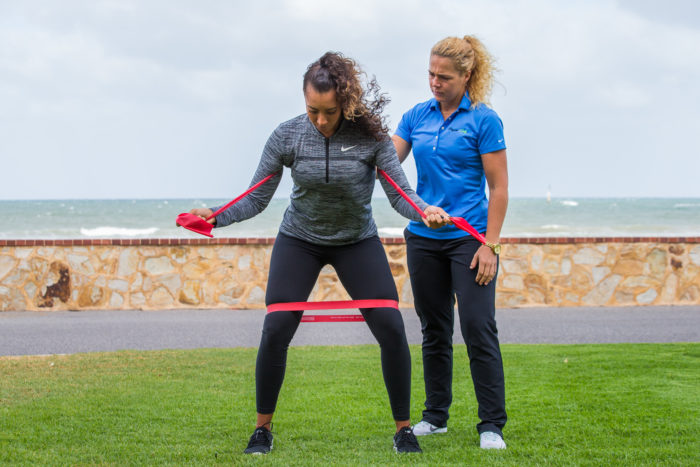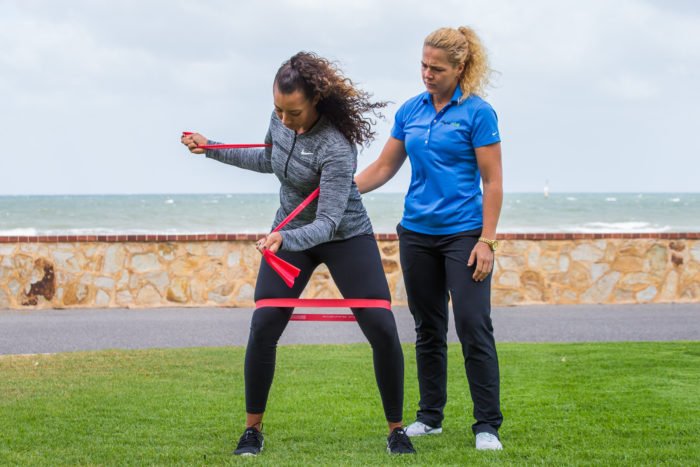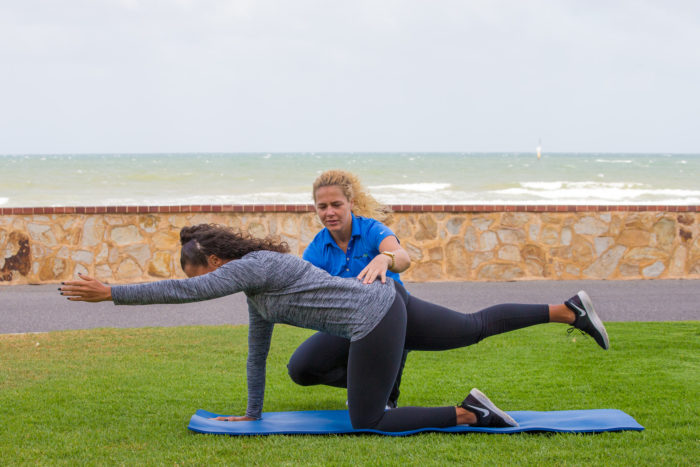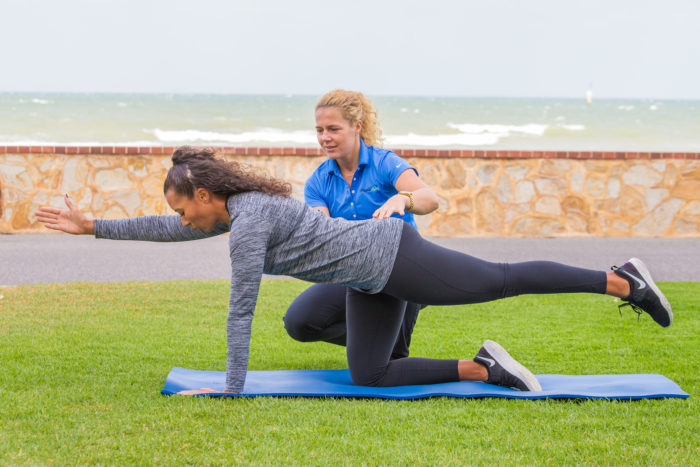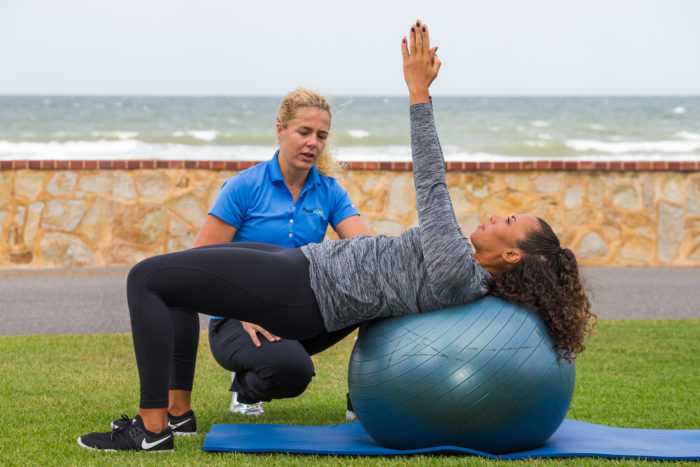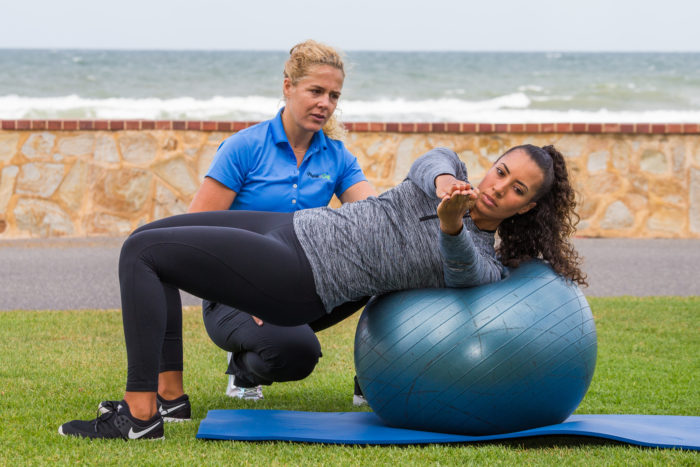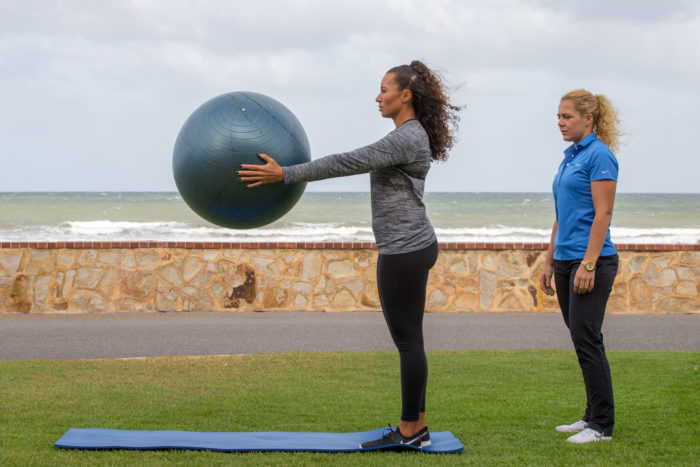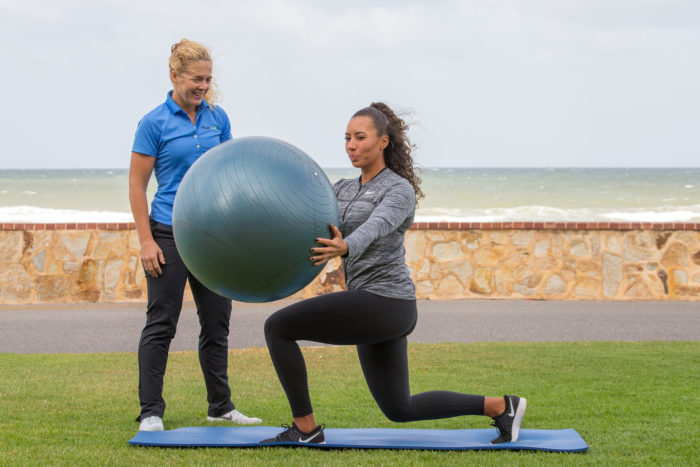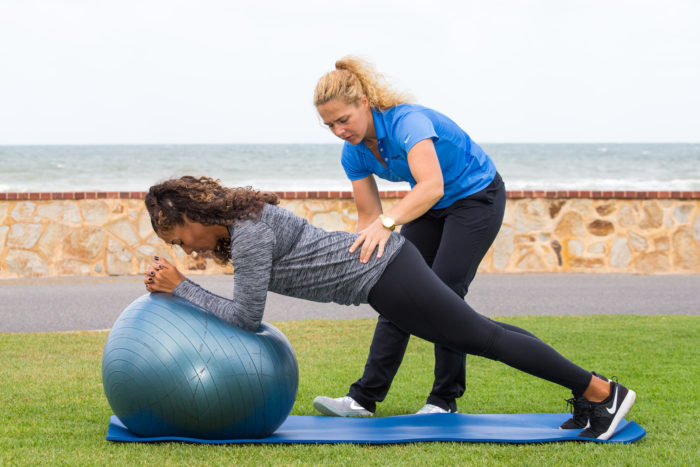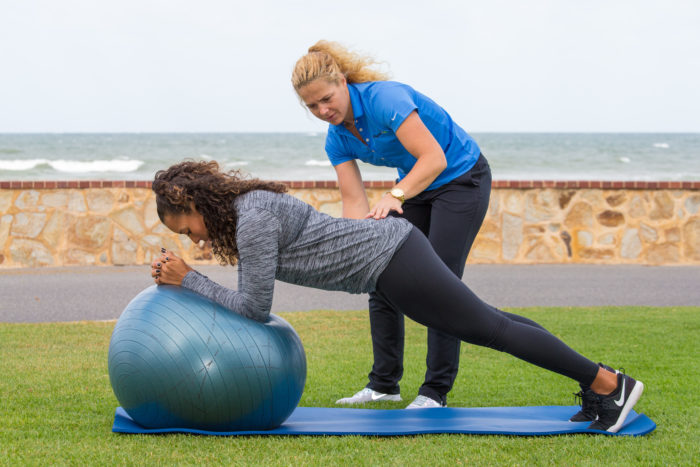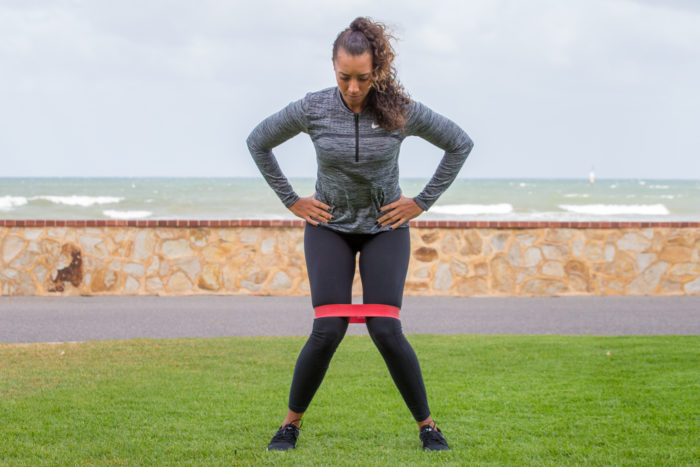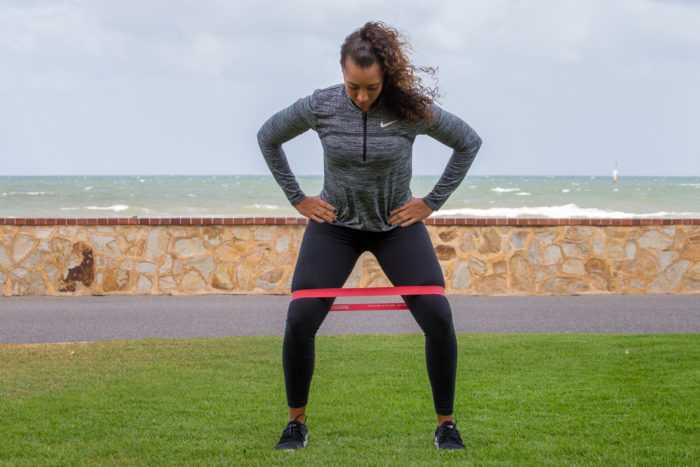Take Your Golf Game to the Next Level Injury Free
By Anne-Lise Bidou (www.physio4golf.com.au)
Do you want to play pain free for longer? Are you looking at improving your golf game by hitting the ball further and more accurately?
Check this out…
Too many golfers neglect the number one key to their golf swing: their body. You can go out and buy the top of the range golf clubs but if your body does not work properly or if you are in pain, I can guarantee you won’t be a happy golfer.
What do I mean by the body not working properly?
The golf swing is an asymmetrical and repetitive movement meaning that you always use the same muscles over and over again. This would lead to some muscle imbalances in the body with some muscles getting strong and some muscles getting weak. As a result, your body would start compensating and you will develop some physical limitations such as reduced mobility and/or stability that could in turn cause some injuries.
You may already find yourself struggling to maintain your golf posture through the swing motion or you may notice some increase tightness towards the end of the round.
So don’t let injury prevent you from playing the game you love and look after your body!
How can I get golf fit?
There are a few key elements to reach the most efficient swing mechanics.
The first one is to have good mobility in certain areas of the body, the main ones being the hips, the mid-back and the shoulders. If you lack mobility in one of these areas, your body would compensate by getting mobility in the area above or below with a greater risk of injury. On the other hand, having good mobility in these areas will help you reach adequate rotation in your backswing and downswing.
The second key element is to have good stability around the pelvis and lower back (core) and the shoulder blades (scapula). An efficient golf swing is a swing that does not allow any leak of energy from the ground to the club head. This can only be achieved with optimal core and scapula stability. When we talk about core strengthening, we don’t talk about building up a 6 pack, but what we talk about is building up deep abdominal muscle strength. The core muscles give stability to the pelvis and lower back while the mid-back and hips can move freely. As for the scapula stability, it is not about squeezing your shoulder blades back together so hard that it is uncomfortable but it is about controlling the appropriate scapula position to optimize the shoulder movement.
The third key element is to have good movement pattern. It is not enough to have good mobility and good stability: your body needs to be able to perform the movements properly. It is crucial to perform the exercises repeatedly with optimal form when working out so that your body learns the right movement patterns. Golfers need to have a strong ability to dissociate their upper body and lower body in order to create an optimal x-factor stretch to generate power in their golf swing. Therefore, they need to work on using effective rotatory movements throughout the swing to control the golf club all the way through impact to the end of the follow through.
This leads us to the fourth key element, which is to have good strength to be able to generate power while sustaining optimal golf posture throughout the swing. Strength training is an important part of the golfers’ fitness program as it allows them to build up muscle strength in specific areas of their body to improve their golf swing efficient and create a strong base to build more power. This will lead to an increase in the club head speed due to an optimisation of the transfer of forces generated from the ground up during the swing and therefore an increase in distance. However, golfers do not need to bulk up to the point that they lose mobility, they only need to be golf fit!
The game of golf has changed dramatically in the last few years and now requires the players to be very athletic so that they can hit the ball further and play longer without getting injured. Therefore, it is crucial for them to train their body to their optimal fitness level to get the most efficient and powerful swing.
On the LET and LPGA, the players go to the gym most days even on game days! They have different programs tailored for their needs and they are very consistent with their fitness plan. They really look after their body to play at their peak potential and prevent injury.
Cheyenne Wood’s take on injury prevention and fitness for golf:
“My first few years of professional golf were vaguely focused on my golf fitness. After playing on tour for five years, I have learned the importance of taking care of your body through creating a fitness and stretching routine. With golf being a unilateral sport, it is important to create a balance within your body’s flexibility and strength. Playing at the highest-level week after week was taking a toll on my body due to weaknesses I had. I found that a fitness and stretching routine was very necessary for preparing my body to compete and prevent injury. I’ve felt improvements this season after incorporating a program that helps increase my stability, mobility and strength.”
Here are some great exercises for you, performed by Cheyenne Woods:
Mobility exercises:
– Self-release of the gluteal muscles using the roller
Goal: Release the buttock muscles and improve hip mobility
How to perform:
- Starting position: Sit on a roller with one leg crossed on the top of the other
- Action: roll back and forth on your buttock, especially on the tight areas
- Sets/Reps: 1 set of 30 seconds on each side – or until you feel the muscles have released
Watching points:
- Keep your buttock muscles relaxed, if the pressure is too much back off by putting more pressure on your grounded foot
– Thoracic Spine rotation with assistance
Goal: Improve thoracic spine mobility while stabilising the pelvis and lumbar spine
How to perform:
- Starting position: Go into the athletic position with a miniband around your knees, place a theraband around your upper chest and pull on it with both hands out
- Action: Push out on the miniband with your knees to activate your buttock muscle and pull onto the band with both hands to pre-activate your core. Turn your chest to one side while maintaining your hips square.
- Sets/Reps: 3 sets x 15 repetitions
Watching points:
- Maintain your athletic position throughout the movement – Maintain neutral spine and spine angle
- Keep your shoulder blades in neutral position
- Keep your hips still as you turn your upper body
Stability exercises:
– 4 point-kneeling exercise
Goal: Improve shoulder, core and hip stability
How to perform:
- Starting position: Go into the all-fours position with your back in neutral, hands positioned under your shoulders and knees under your hips.
- Action: Lift one arm up and the opposite leg up while maintaining a neutral spine. Alternate side each time.
- Sets/Reps: 2 sets x 12 repetitions
Watching points:
- Maintain neutral spine (do not let your back arch)
- Maintain your shoulder blades in neutral (do not let your upper body collapse down)
– Mid-back rotation on a Swiss ball
Goal: Improve core stability and upper body/lower body dissociation
How to perform:
- Starting position: Lying on a Swissball with your upper back and head resting on the ball, your knees bent and hips up, putting pressure on your heels (to activate your gluteal muscles)
- Action: Turn your upper body on the Swissball while keeping your hips square
- Sets/Reps: 3 sets x 10 repetitions
Watching points:
- Keep your hips up but do not arch your lower back; Maintain neutral spine
- Maintain your hips as square as possible
- Keep your knees in line with your hips and over your ankles
- Do not consciously squeeze your buttock muscles, let them work by maintaining the weight on your heels
– Standing lunge + thoracic rotation exercise
Goal: Improve scapula + core stability and upper body/lower body dissociation
How to perform:
- Starting position: Standing in an optimal posture (Neutral spine and scapula positions) hold a Swiss ball in front of you
- Action: Go into a lunge position while maintaining your spine and scapula in neutral positions. Then turn your body over to the side of the front leg. Turn back to the front position then come back up to standing. Repeat on the other side.
- Sets/Reps: 3 sets x 10 repetitions
Watching points:
- Maintain neutral spine; Do not lean forward or to the side
- Do not let your back arch
- Keep your shoulders down; Do not shrug your shoulders up
- Keep your knee over your front foot; Do not let it go in as you turn
- Keep your hips level and square
– Front plank on Swiss ball
Goal: Improve scapula + core stability
How to perform:
- Starting position: Go into a plank position, on your toes and with your forearms resting on a Swiss ball. Position yourself in neutral spine and neutral scapula by gently pushing away on the ball with your forearms
- Action: Hold the position. Alternatively, progress the exercise by adding some arm movements, pushing the ball front and back to the starting position
- Sets/Reps: 4 sets x 30 seconds
Watching points:
- Neutral spine; do not let your back arch or hips collapse
- Neutral scapula position
- Keep your head in line with your body
Strengthening exercises:
– Standing hip muscles strengthening
Goal: Gluteal/Hip muscles strengthening
How to perform:
- Starting position: Go into the athletic position with a miniband around your knees
- Action: Move your knees inwards then push them out while maintaining your posture
- Sets/Reps: 4 sets x 10 repetitions
Watching points:
- Keep your pelvis and lower back in neutral
- Maintain good posture with your neck and back in neutral
Anne-Lise Bidou, owner and head physiotherapist at Physio4Golf, works with some of the world’s best women professional golfers.
Follow us on Facebook and Instagram:
Facebook: https://www.facebook.com/physio4golf/
Instagram: https://www.instagram.com/physio4golf/





